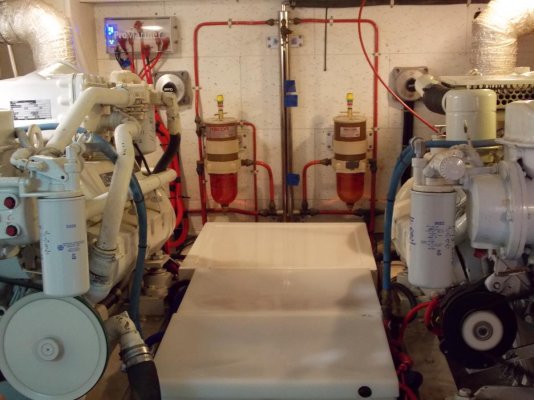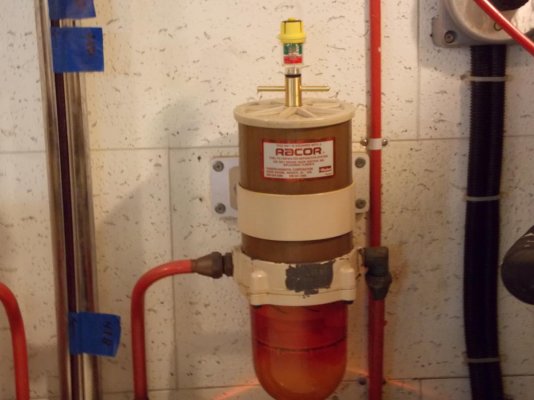Alaskan Sea-Duction
Guru
- Joined
- Jul 6, 2012
- Messages
- 8,056
- Location
- USA
- Vessel Name
- Alaskan Sea-Duction
- Vessel Make
- 1988 M/Y Camargue YachtFisher
I changed out my primaries and secondary fuel filters and cleaned the Racor housings. What I like about these old 3208T/As, so long as you fill the Racors and the secondary filters with fuel, I don't have to do any pumping as very little if any air is introduced. Another task done on ASD for the trip north this summer.
I also installed these cool vacuum gages on the primary filters. They work like an air cleaner gage on your diesel truck. You can read more here:
Fuel Fixers - Filter Change Gauges
I also installed these cool vacuum gages on the primary filters. They work like an air cleaner gage on your diesel truck. You can read more here:
Fuel Fixers - Filter Change Gauges





